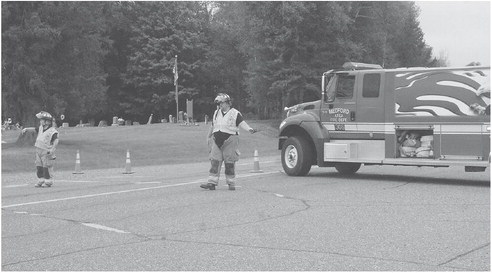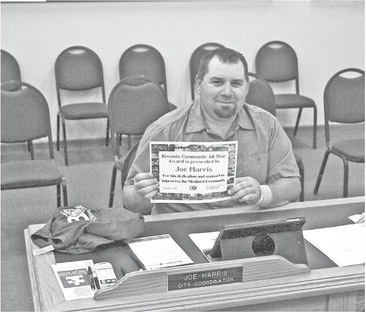Parents to get more leeway on COVID-19


Colby schools will not automatically send kids home
After hearing from a room full of parents concerned about another school year of endless quarantines, Colby school board members agreed Monday to not automatically send kids home for 14 days even if they exhibit symptoms of a possible COVID-19 infection.
A return-to-school plan had originally listed “shortness of breath/trouble breathing; a new loss of taste or smell; or a fever of at least 100.4” as symptoms that would result in a student being sent home for up to 14 days or until a negative COVID-19 test could be presented. Following discussion, the board voted to simply contact the parents if a student came to school with these symptoms.
The decision puts the onus on parents to choose if they want to get their child tested for COVID-19, and it prevents the school district from assuming that a student has the disease based on some of the more telltale symptoms.
Board member Dave Decker said it should be parents, not the school district, that make the call to the health department if they feel their son or daughter has COVID-19.
“I feel that should be the parents’ decision,” he said. “That should be the parents’ responsibility.”
In his original proposal, superintendent Steve Kolden had included two lists of symptoms: the three most commonly associated with COVID-19, and a much longer list that included cough, sore throat, headache and runny nose. If a student had some of these more generic symptoms, the parents would be contacted but the student would not be sent home as a matter of policy. Kolden said he and others never liked sending students home for some of the more generic symptoms, which are “less unique to COVID.”
“Kids were missing way too much school,” Kolden said.
Ultimately, the board decided to erase the distinction between the two sets of symptoms and just contact the parents if the students appeared to be ill when they came to school. Board member Eric Elmhorst was the only one to vote against the change, which passed on a 6-1 vote.
When introducing his plan to board members, Kolden made it clear that it was his goal to “keep as many kids in school as much as possible.” He said contact tracing is one way to ensure this.
“If I have a positive case in a sixthgrade classroom, and I don’t go through the contact tracing protocols, I believe the Clark County Health Department would quarantine the entire class because they do not know who was a close contact,” he said.
A “close contact” is defined as anyone who has been within three feet of a COVID- positive person for at least 15 minutes (cumulative) or more during the day. Kolden said district officials do contact tracing by looking at seating charts and reviewing classroom activities.
If a student is determined to be a close contact of someone with COVID-19, Kolden said that student will be reported to the health department and the parents will also be informed, with a recommendation to start a quarantine until they hear otherwise.
Kolden also made it clear that the county health departments will make all decisions when it comes to quarantining students and staff. Based on guidance from the CDC and the Wisconsin Health Services, vaccinated students and staff will likely not be quarantined.
“If the health department decides to quarantine someone who is vaccinated or unvaccinated, that’s the health department’s decision, not a school decision,” he said.
Masks will remain optional, but recommended, especially for unvaccinated students and those in third grade or younger. School activities, such as outdoor sporting events and those held by groups like CUDA, will return to normal, pre-COVID rules.
While many parents may not like some of the plan’s provisions, Kolden noted that the health department is also opposed to what he came up with.
“When we try to strike a middle ground, both sides are mad at me,” he said. “Clark County is not happy with this recommendation. They’ve seen it; they do not support it.”
One element of that plan that drew questions from board members and parents is a 5 percent threshold for the school board to consider further action. Under this provision, if more than five percent of the district’s total population tested positive for COVID-19, Kolden would call a board meeting to revisit the plan approved on Monday. This could presumably lead to tighter restrictions, including a reinstatement of the mask mandate that was in place for most of last school year.
With 980 students and 120 staff members, Kolden said 55 total people would need to be COVID-positive at the same time for this threshold to be reached. By means of comparison, Kolden said 85 students and staff tested positive during the entire course of last school year, so it’s unlikely that 55 will be infected at the same time.
Board member Teri Hanson still questioned if that number couldn’t be increased to 7 percent. She also pointed out that people who have previously contracted COVID have antibodies that can make them immune for 18 to 24 months, according to information from the CDC. With that in mind, she wondered if parents whose kids are not vaccinated but have the antibodies could be treated as if they are vaccinated.
“In my mind, that kind of levels the playing field with vaccine cards or not,” she said.
Board member Cheryl Ploeckelman said by not sending kids home with COVID- like symptoms, “then we are not dealing with COVID at all.”
This brought some applause from the audience.
“You’re giving it back to the parents to deal with,” one audience member said.
“I agree with giving it back to the parents, but you know, not all parents are model parents,” Ploeckelman said, describing a situation in which a parent may knowingly send their child to school sick and just give them medication to make them appear healthy.
“That child can then pass this on to a lot of other children because Tylenol will mask the symptoms,” she said.
Board member Todd Schmidt said he thinks the plan is “a good compromise” that addresses a lot of highly contentious issues.
“I think masks are effective to a certain degree. I think they should be optional,” he said. “I’ve heard from a lot of parents that would like to keep the masks in place, so it’s a free country.”
Schmidt said he likes leaving it up to the parents to decide when students should be kept home from school or not.
“I think a lot of you folks have a lot of commonsense to keep your kids home if they’re sick,” he told the audience. “I don’t think they should stay home for 14 days for certain symptoms. Obviously, if you’re concerned about them having COVID, you can get them tested.”
The back-to-school plan is required in order to for the district to collect $3 million from the federal Elementary and Secondary School Emergency Relief (ESSER) Fund. Kolden said a plan must be put in place, but the federal government does not dictate what has to be in it.
Parents speak out
Sixteen parents spoke to the board Monday, and all but one of them advocated for more lenient COVID-19 restrictions for the 2021-2022 school year.
Many of them rehashed arguments about face masks not being an effective, and several also expressed concerns about singling out unvaccinated students by subjecting them to quarantines.
Parent Kim Meier said encouraging kids to get vaccinations is “child abuse” and against international law forbidding medical experimentation.
“Do not normalize masking, testing and experimental drugs for our children,” she told the board.
Tanya Geiger cited the word “liberty” from the Pledge of Allegiance as “freedom from control, interference, obligation, restriction, hampering condition.”
“Forcing us or our children to do anything against our will directly goes against the very pledge that you all take at the beginning of every single meeting,” she said.
Parent Amanda Haupt was the only one to speak in favor of masks, especially since younger children are not able to get the vaccine. She said she knows of at least six soon-to-be second graders who currently have the disease.
“We have to sometimes do what’s in the best interest for everyone, and we don’t need an outbreak right away at the start of school,” she said. “This new variant is hitting our children. Last week, 94,000 children in the United States were diagnosed with COVID.”
Parent Colleen Halopka directly contradicted Haupt’s plea for masking students, claiming that “it’s a proven fact that they don’t work.”
Halopka said COVID-19 is never going to just go away, even with the shots.
“We will not eliminate COVID,” she said. “We’re going to have to live with this, and we should not be masking our children.”
Multiple parents expressed concerns about students falling behind academically because of all of the disruptions caused by COVID precautions last school year.
Craig Oehmichen urged board members and district staff to stay focused on teaching students core subjects rather than trying to eradicate COVID-19.
“Last year you let education slip away as an afterthought to masks and quarantines,” he said. “When you have teachers distracted by trying to enforce masks and principals chasing contact tracing, there’s little time left for education.”
Oehmichen cited projections that students are three to six months behind where they should be at this point because of all the COVID-related disruptions. He said the effect is particularly bad on younger students because they “need to be able to see facial and mouth movements to learn how to read.”
“Masks on these kids and teachers hinders learning,” he said.
When Oehmichen asked if there is a plan in place to catch kids up, Kolden said the district can use federal money for “remediation” — offering extra instruction to those who have fallen behind.
If standardized tests in October show that students are months behind on their education, Oehmichen questioned if they would be held back a grade.
Kolden said the goal is to “remediate the learning loss as opposed to holding them back,” noting that decisions like that are made on a case-by-case basis.
Oehmichen said the district’s teachers and other staff have a lot of work to do to make up for last year.
“We’re going to need more than just 100 percent out of this school,” he said. “We’re going to need 150 percent for next year.”
Board member Teri Hanson said making sure students are educated at a the proper grade level should be a top priority going into the new school year.
“If any of our students are falling behind when they walk into the classroom on Sept. 1, we should be doing our darndest to get them caught up if they have not been already over the summer,” she said.



